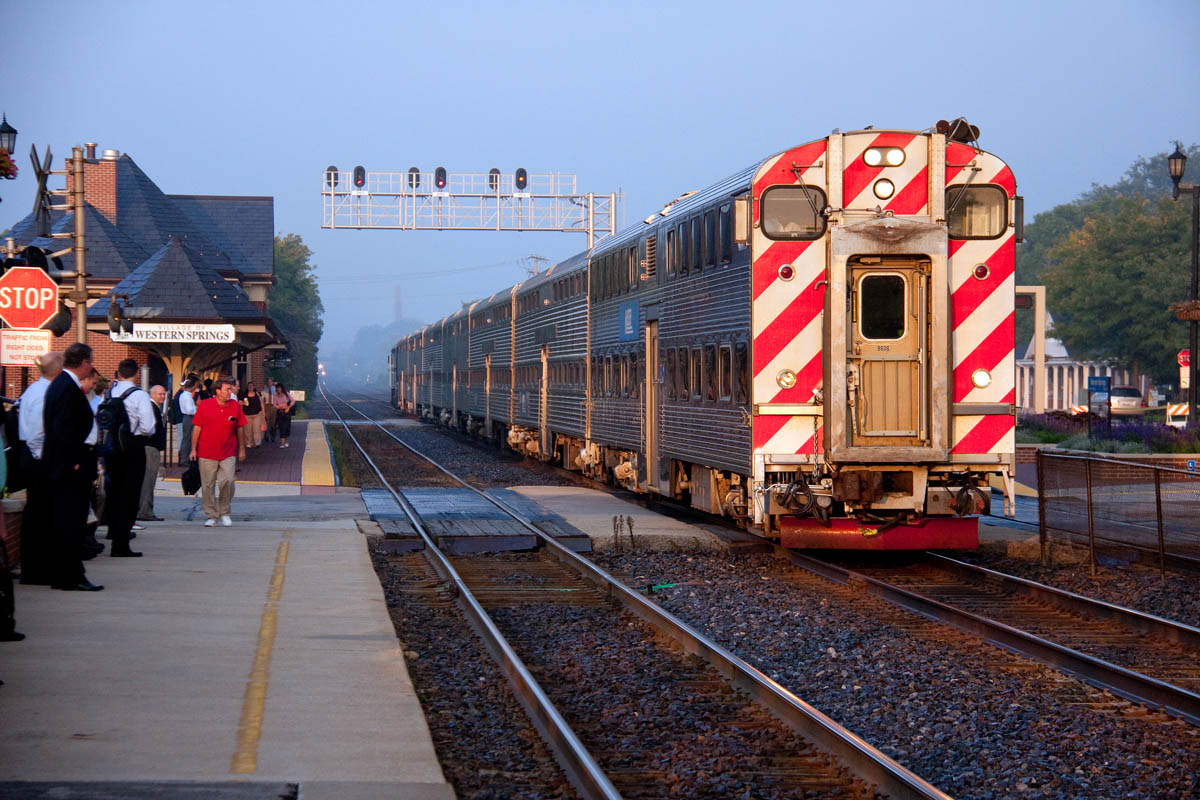A A fellow engineer says, “Whether running freight or passenger trains, it is all about slack management. With passenger it is just on a smaller scale.”
That being said, there are differences in handling a commuter/passenger train in pull mode versus push mode. The locomotive has gauges and warning lights in front of you, and you can get a “feel” for how the engine is behaving through the gauges, as well as through your eyes, ears, and by the “seat of your pants.” In push mode, you don’t have that input, as the locomotive is on the other end. Experienced engineers will be able to tell if an engine is not acting properly and can make a good assumption if something is amiss, but without gauges in the cab car other than air gauges and a trainline alarm bell, you’re never quite sure.
When power braking in pull mode, you are able to bail off the engine brakes and keep them released. When power braking in push mode, the engine brakes apply and release just like the passenger cars since you cannot “bail off” the engine brakes from the cab car. So you actually have a little more braking ability due to the engine brakes being applied as well as the brakes on the cars. You also have to be careful when doing any kind of power braking and release (i.e.: coming into a speed restriction) in push mode, as applying too much power before the locomotive brakes are completely released will also result in a kick in the pants once the brakes do come off (along with possible comments from the passengers or train crew). This isn’t an issue when running from the locomotive, as the unit is pulling away from the cars.
Metra units (the trains I run) also have blended braking. It is activated when setting the automatic (train) brake in either push or pull mode. Blended brakes work only if the throttle is in idle. When the automatic brake is set, both the train and engine brakes will set initially, then after a few seconds the blended brake feature kicks in. The dynamic brakes activate while the engine brake cylinder pressure will reduce (without the need to bail them off) until there is only about 6-10 pounds of pressure in the cylinders.
When using the blended brakes while running from the locomotive, the slack on the cars will usually come in gently and is hardly noticeable in the cab or coaches. Running in push mode can be a different story, due to the weight of the locomotive at the rear of the train. Making a brake application from the cab car end means the cars grab first and the engine last.
Even though it is generally a short distance, you can still get a good kick in the pants (along with more funny looks or comments from the passengers) as the locomotive rolls into the cars from the rear if you make a heavy application. It feels similar to having a bunch of empty freight cars in front of loads in a freight train: a few seconds later you get a good “yank” in the other direction as the dynamic brake kicks in on the locomotive. Two ways to avoid this are to either power brake initially, gradually closing the throttle to idle and letting the blended brakes take over, or make a light application, let the brakes grab lightly and the blended brake kick in, then make a heavier application.
The Metra trains I run are usually four to 11 cars. – Steve Bauer, Union Pacific engineer in Metra suburban service














